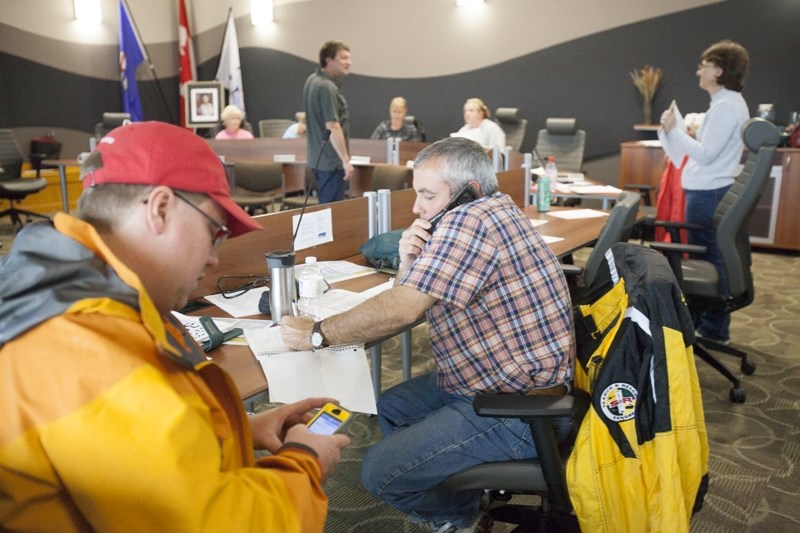The catastrophic flooding that struck parts of Central Alberta in June revealed the true power of how information could be shared quickly and across a large geographic area using social media and other online tools during a crisis.
Local governments such as Mountain View and Red Deer counties and the Town of Sundre made extensive use of their websites and tools such as Twitter and Facebook to let property owners, businesses, media and other municipalities know about river conditions, road closures and evacuation notices nearly instantaneously.
And while using social media and websites to release timely information to the public about council decisions or road conditions is nothing new, Andrew Wild, Mountain View County's communications coordinator, said the county had never made such wide use of these tools before the June flooding event.
“It was the longest duration, probably the most direct interaction with residents,” said Wild, adding that during the height of the flooding between June 20 and 23, the county was averaging three to five tweets per hour from its emergency operations centre about the flooding situation and, on average, each message the county posted on the social networking site was retweeted seven to 20 times.
The county did not stop actively tweeting about the flooding until July 4 or 5.
When the flooding started on June 20, he said, the county had 515 Twitter followers and by the time the waters began to recede, that number had jumped to 633.
“I think that shows people were expecting information via that medium. I only expect that to grow as we go forward,” Wild said.
The June flooding event was also unique for the county in that it was the first time there was two-way communication between the county's communication department and the public over social media.
Wild said many people were responding to the county's messages on Twitter using “at tweets” where the responses included the county's Twitter handle, @MVCounty.
And although he and other county employees are not supposed to engage in conversations with the public on Twitter, because so many people had questions and concerns about their properties, Wild did end up answering people.
Another way Twitter benefitted local governments during the flooding was it allowed communicators to send direct messages back and forth between emergency operations centres.
“And what that did from an operational point of view was we were off the phones,” Wild said, adding this was advantageous since the messages would always go right to the person responsible for communicating with the public at either end and phone lines were always open for communicating with emergency officials or those members of the public without access to a computer.
Kim Galloway, the Town of Sundre's economic development officer, who was in charge of communications at the town's emergency operations centre, said over the course of the flooding, the town issued 40 Facebook and Twitter posts and six news releases on its website.
Each Facebook post, she added reached an average of 1,500 people and as many as 3,200 people during the peak of the flooding.
The town also saw its social media following increase by huge numbers during the event, she added.
“We were at around 300 Facebook likes before the flood event and by June 25, we were at 1,052 Facebook likes. Twitter, we started at just over 150 followers and ended that weekend with about 740 followers,” said Galloway.
Although the town did not have a formal communications strategy at the time for using online and social media resources, Galloway said the June flood has given the town an idea about how to make its communications efforts even better for the next major event or disaster.
“I would enhance and formalize our communication strategy to ensure those who cannot access information via Internet and telephone can access pertinent information, the town would also address the level of consistency of the information that is shared with the community,” she said.
And Wild said with the increased prevalence of social media during the flooding, the county is also working on expanding its online communications reach.
“I can tell you that if we have another occurrence, whatever that occurrence may be coming forward in the future, actually any time in the next couple weeks, we'll also have a Facebook presence because of the success we've seen with some of these other instances with social media,” said Wild.



